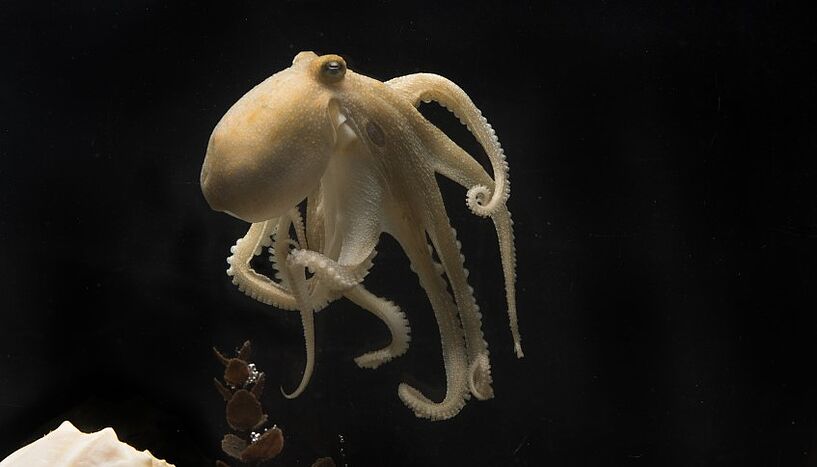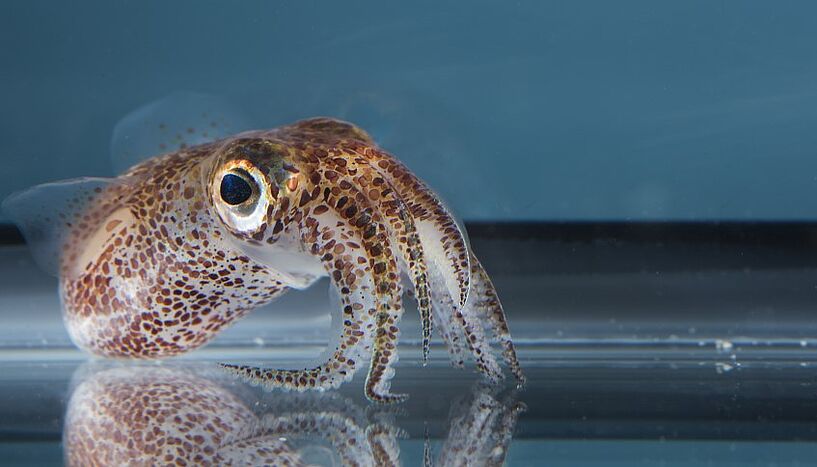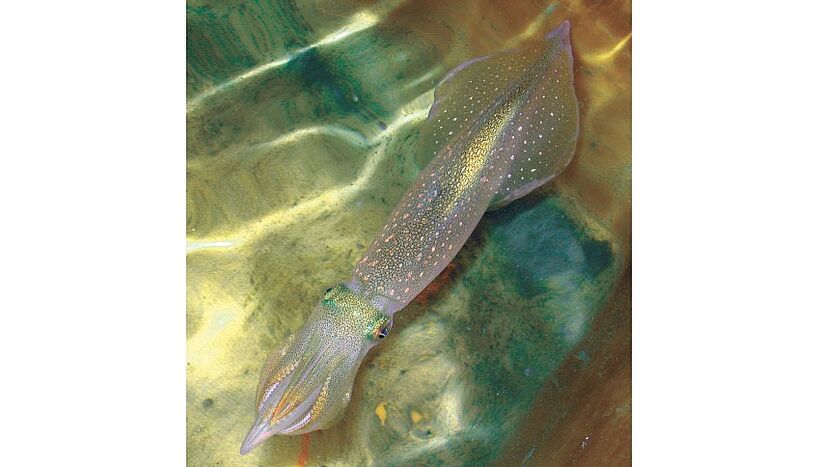How octopuses and squid have broken away from the previously known pattern of evolution
04. May 2022The chromosomes of cephalopods differ greatly from those of any other group of animals
Cephalopods such as octopuses and squids are fascinating animals to both scientists and the general public. Their camouflage ability, complex and highly interactive behaviors, are so unique among the animal kingdom, that they defy our knowledge and understanding we learnt from other "complex" animals, such as humans. A big challenge for researchers of the past decade in understanding cephalopod biology has been to decipher their genomes to understand what lies behind such morphological complexity. One of the biggest bottlenecks was the large size of cephalopod genomes, which are very similar to the human genome size, and often larger than their molluscan cousines.
Scientists at the University of Vienna have led two multi-national studies that begin to address this gap in our knowledge and reveal the secrets of cephalopod genomes. Those studies present and take advantage of the high-quality genomes of the California two-spot octopus (Octopus bimaculoides), the Hawaiian bobtail squid (Euprymna scolopes), and the Boston market squid (Doryteuthis pealeii), as well as several emerging new tools to study genome organization and function. Both studies are now published in Nature Communication.
In the first paper (Albertin et al), the Vienna team has sought to investigate the composition of cephalopod chromosomes and found out that octopus and squid chromosomes are very different to those of any other animal group. While animal chromosomes are highly preserved during evolution, cephalopods have found a way to break away from this pattern and form completely new combinations. This has led to the emergence of a very special karyotype: their chromosomes look like a mosaic of otherwise highly preserved building blocks.
The second paper (Schmidbaur et al) investigated the contribution of these genome rearrangements towards the many known cephalopod morphological novelties. The study focused on genomic regions consisting of three or more genes that are only found together in cephalopods. Researchers have found out that such new neighbors often have different interactions with each other than other parts of the genome and are involved in many of the novel cephalopod tissues, such as the expanded nervous system.
The two studies together reveal a very unique genomic organization of cephalopods that opens up many new research avenues. "Through our research, it has now become clear that in order to understand the biology of cephalopods, we first need to understand the genetic building blocks of these animals - and such building blocks often seem to be radically different from what we know of other animals," says Schmidbaur from the Ecology and Evolution Doctoral school (VDSEE) at the University of Vienna.
Original Publications:
Caroline B. Albertin, Sofia Medina-Ruiz, Therese Mitros, Hannah Schmidbaur et al (2022). Genome and Transcriptome Mechanisms Driving Cephalopod Evolution. Nature Communications
DOI: 10.1038/s41467-022-29748-w.
Hannah Schmidbaur et al. (2022) Emergence of Novel Cephalopod Gene Regulation and Expression through Large-Scale Genome Reorganization. Nature Communications
DOI: 10.1038/s41467-022-29694-7
Pictures:
Abb. 1: California two-spot octopus (Octopus bimaculoides) (Credit: Tom Kleindinst, Marine Biological Laboratory)
Abb. 2: Hawaiian bobtail squid (Euprymna scolopes) (C: Tom Kleindinst)
Abb. 3: Boston market squid (Doryteuthis pealeii) (C: Elaine Bearer)
Scientific contact
Dr. Oleg Simakov
Department for Molecular Evolution and DevelopmentUniversity of Vienna
1090 - Wien, Althanstraße 14 (UZA I)
+43-1-4277-570 40
oleg.simakov@univie.ac.at
Further inquiry
Mag. Alexandra Frey
Media Relations ManagerUniversität Wien
1010 - Wien, Universitätsring 1
+43-1-4277-17533
+43-664-8175675
alexandra.frey@univie.ac.at
Downloads:
20220504_Simakov_Abb1_01.jpg
File size: 10,3 MB
20220504_Simakov_Abb2_01.jpg
File size: 13,56 MB
20220504_Simakov_Abb3_01.jpeg
File size: 360,95 KB



